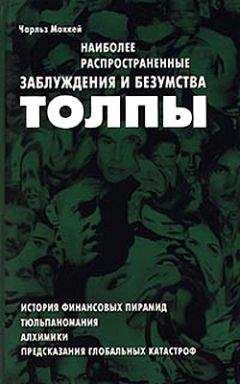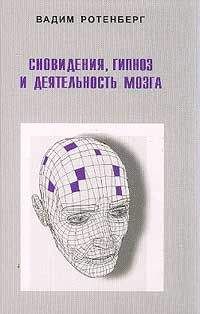Отто Кернберг - Тяжелые личностные расстройства: стратегии психотерапии

Скачивание начинается... Если скачивание не началось автоматически, пожалуйста нажмите на эту ссылку.
Жалоба
Напишите нам, и мы в срочном порядке примем меры.
Описание книги "Тяжелые личностные расстройства: стратегии психотерапии"
Описание и краткое содержание "Тяжелые личностные расстройства: стратегии психотерапии" читать бесплатно онлайн.
"Одна из самых трудных проблем психиатрии – это проблема дифференциального диагноза, особенно в тех случаях, когда можно подозревать пограничное расстройство характера.
Пограничные состояния следует отличать, с одной стороны, от неврозов и невротической патологии характера, с другой – от психозов, особенно от шизофрении и основных аффективных психозов."
Masterson, J. F. (1978). The borderline adult: Transference acting-out and working-through. In New Perspectives on Psychotherapy of the Borderline Adult, ed. J. F. Masterson. New York: Brunner/Mazel, pp. 121–147.
Masterson, J. F. (1980). From Borderline Adolescent to Functioning Adult. New York: Brunner/Mazel.
Meltzer, D. (1973). Sexual States of Mind. Perthshire, Scotland: Clunie.
Menninger, K. (1952). A Manual for Psychiatric Case Study. New York: Grune & Stratton.
Menninger, W. (1936). Psychiatric hospital therapy designed to meet unconscious needs. In Psychiatrist for a Troubled World, vol. 1. Kansas City, Mo.: Hallmark, 1967, pp. 375–385.
Menninger, W. (1943). Fundamentals of Psychiatry. Topeka: Capper.
Meyer, A. (1957), Psychobiology: A Science of Man. Springfield, III.: Charles С. Thomas.
Miller, I. (1969). Interpretation as a supportive technique in psychotherapy. Bulletin of the Menninger Clinic, 33:154–164.
Millon, T. (1981). Disorders of Personality: DSM-III: Axis II. New York: Wiley.
Modell, A. (1976). “The holding environment” and the therapeutic action of psychoanalysis. J. American Psychoanalytic Association, 24:285–307.
Money, J., and Ehrhardt, A. (1972). Man & Woman, Boy &’ Girl, Baltimore: Johns Hopkins University Press.
Money-Kyrle, R. (1956). Normal countertransference and some of its deviations. International J. Psycho-Analysis, 37:360–366.
Moore, B. (1968). Contribution to symposium on acting out. International J. Psycho-Analysis, 49:182–184.
Moore, В., and Fine, B. (1968). A Glossary of Psychoanalytic Terms and Concepts. New York: American Psychoanalytic Association.
Novey, S. (1959). The technique of supportive therapy in psychiatry and psychoanalysis. Psychiatry, 22:179–187.
Olinick, S. (1964). The negative therapeutic reaction. International Psycho-Analysis, 45:540–548.
Orwell, G. (1949). 1984. New York: Harcourt.
Panel (1957). Acting out and its relation to impulse disorders, M. Kanzer, reporter. J. American Psychoanalytic Association, 5:136–145.
Panel (1970). Action, acting out and the symptomatic act, N. Atkins, reporter. J. American Psychoanalytic Association, 18:631–643.
Panel (1977). Varieties of oedipal distortions in severe character pathologies, W. S. Rob-bins, reporter. J. American Psychoanalytic Association, 25:201–218.
Pasamanick, B., Scarpitti, F., and Dinitz, S. (1967). Schizophrenia in the Community: An Experimental Study in the Prevention of Hospitaliz.ation. New York: Appleton-Century-Crofts.
Paz, C. (1976). Estructuras y estados fronterizos en niños, adolescentes y adultos. Buenos Aires: Gráfica Santo Domingo.
Perry, J., and Klerman, G. (1980). Clinical features of the borderline personality disorder. American J. Psychiatry, 137:165–173.
Plutchik, R. (1980). Emotions: A Psychoevolutionary Synthesis. New York: Harper & Row.
Pope, H., Jones, J., Hindson, J., Cohen, В., and Gunderson, J. (1983). The validity of DSM-III borderline personality disorder. Archives General Psychiatry, 40:23–30.
Powdermaker, F. (1948). The techniques of the initial interview and methods of teaching them. American J. Psychiatry, 104:642–646.
Rabkin, L. (1965). The passive aggressiveness and learning. Exceptional Child, 32:1–3.
Packer, H. (1957). The meaning and uses of countertansference. Psychoanalytic Quarterly, 26:303–357.
Racker, H. (1968). Transference and Countertransference. New York: International Universities Press.
Rangell, L. (1968). A point of view on acting out. International J. Psycho-Analysis, 49:195–201.
Rapaport, D. (1960). The Structure of Psychoanalytic Theory. Psychological Issues, Monograph 6. New York: International Universities Press.
Rapaport, D. (1967). Collected Papers of David Rapaport, ed. M. M. Gill. New York: Basic Books.
Rapaport, D., and Gill, M. M. (1959). The points of view and assumptions of metapsychology. International J. Psycho-Analysis, 40:153–162.
Reich, A. (1951). On countertransfcrence. Psychoanalytic Contributions. New York: international Universities Press, 1973, pp. 136–154.
Reich, W. (1933). Character Analysis. New York: Farrar, Straus, & Giroux, 1972.
Reider, N. (1957). Transference psychosis. J. Hillside Hospital, 6:131–149.
Rexford, E., ed. (1978). A Developmental Approach to Problems of Acting Out, revised edition. New York: International Universities Press.
Rey, J. (1979). Schizoid phenomena in the borderline. In Advances in Psychotherapy of the Borderline Patient, ed. J. LeBoit and A. Capponi. New York: Jason Aronson, pp. 449–484.
Rice, A. K. (1965). Learning for Leadership. London: Tavistock Publications.
Rinsley, D. (1977). An object-relations view of borderline personality. In Borderline Personality Disorders, ed. P. Hartocollis. New York: International Universities Press, pp. 47–70.
Rinsley, D. (1980). Treatment of the Severely Disturbed Adolescent. New York: Jason Aronson.
Riviere, J. (1936). A contribution to the analysis of the negative therapeutic reaction. International J. Psycho-Analysis, 17:304–320.
Robins, L. (1966). Deviant Children Grown Up. Baltimore: Williams & Wilkins.
Rogers, C. (1951). Client-Centered Therapy. Boston: Houghton Mifflin.
Romm, M. (1957). Transient psychotic episodes during psychoanalysis. J. American Psychoanalytic Association, 5:325–341.
Rosenfeld, H. (1963). Notes on psychopathology and psychoanalytic treatment of schizophrenia. In Psychotherapy of Schizophrenia and Manie-Depressive States (Psychiatric Research Report No. 17), ed. H. Azima and B. C. Glueck, Jr. Washington, D.C.: American Psychiatric Association, pp. 61–72.
Rosenfeld, H. (1964). On the psychopathology of narcissism: A clinical approach. International J. Psycho-Analysis, 45:332–337.
Rosenfeld, H. (1966). The need of patients to act out during analysis. Psychoanalytic Forum, 1:19–29.
Rosenfeld, H. (1971). A clinical approach to the psychoanalytic theory of the life and death instincts: An investigation into the aggressive aspects of narcissism. International J. Psycho-Analysis, 52:169–178.
Rosenfeld, H, (1975). Negative therapeutic reaction. In Tactics and Techniques in Psychoanalytic Therapy, vol. II, Countertransference, ed. P. L. Giovacchini. New York: Jason Aronson, pp. 217–228.
Rosenfeld, H. (1978). Notes on the psychopathology and psychoanalytic treatment of some borderline patients. International J. Psycho-Analysis, 59:215–221.
Rosenfeld, H. (1979a). Difficulties in the psychoanalytic treatment of borderline patients. In Advances in Psychotherapy of the Borderline Patient, ed. J. LeBoit and A. Capponi. New York: Jason Aronson, pp. 187–206.
Rosenfeld, H. (1979b). Transference psychosis in the borderline patient. In Advances in Psychotherapy of the Borderline Patient, ed. J. LeBoit and A. Capponi. New York: Jason Aronson, pp. 485–510.
Schilder, P. (1938). Psychotherapy. New York: Norton, 1951.
Schlesinger, H. (1969). Diagnosis and prescription for psychotherapy. Bulletin of the Menninger Clinic, 33:269–278.
Schneider, K. (1950). Psychoanalytic therapy with the borderline adult: Some principles concerning technique. In New Perspectives an Psychotherapy of the Borderline Adult, ed. J. Masterson. New York: Brunner/Mazel, pp. 41–65.
Searles, H. (1965). Collected Papers on Schizophrenia and Related Subjects. New York: International Universities Press.
Searles, H. (1977). Dual – and multiple-identity processes in borderline ego functioning. In Borderline Personality Disorders, ed. P. Hartocollis. New York: Inters national Universities Press, pp. 441–455.
Searles, H. (1978). Psychoanalytic therapy with the borderline adult: Some principles concerning technique. In New Perspectives on Psychotherapy of the Borderline Adult, ed. J. Masterson. New York: Brunner/Mazel, pp. 41–65.
Searles, H. (1979). The countertransference with the borderline patient. In Advances in Psychotherapy of the Borderline Patient, ed. J. LeBoit and A. Capponi, New York: Jason Aronson, pp. 309–346.
Segal, H. (1964). Introduction to the Work of Mêlanie Klein. New York: Basic Books.
Segal, H. (1967). Melanie Klein's technique. In Psychoanalytic Techniques: A Handbook for the Practicing Psychoanalyst, ed. B. Wolman. New York/London: Basic Books, pp. 168–190.
Segal, H. (1979). Klein. Glasgow: Collins.
Selzer, M. (1981). The consultant interview. Unpublished.
Shapiro, D. (1965). Neurotic Styles. New York: Basic Books.
Shapiro, E., Zinner, J., Shapiro, R., and Berkovitz, D. (1975). The influence of family experience on borderline personality development. International Review Psycho-Analysis, 2:399–412.
Sharpe, E. (1931). Anxiety: Outbreak and resolution. In Collected Papers on Psycho-Analysis, ed. M. Brierly. New York: Brunner/Mazel, 1978, pp. 67–80.
Simmel, E. (1929). Psychoanalytic treatment in a sanatorium. International J. Psycho-Analysis, 10:70–89.
Small, T., Small, J., Alig, V., and Moore, D. (1970). Passive-aggressive personality disorder: A search for a syndrome. American J. Psychiatry, 126:973–983.
Spitz, R. (1965). The First Year of Life. New York: International Universities Press.
Spitz, R. (1972). Bridges: On anticipation, duration, and meaning. American Psychoanalytic Association, 20:721–735.
Spitzer, R., and Williams, J. (1980). Classification of mental disorder and DSM-III. In Comprehensive Textbook of Psychiatry, III, ed. H. I. Kaplan, A. M. Freedman, and B. J. Sadock. Baltimore: Williams & Wilkins, pp. 1035–1072.
Stafford-Clark, D. (1970). Supportive psychotherapy. In Modern Trends in PsychologicalMedicine, vol. 2, ed. D. J. Price. New York: Appleton-Century-Crofts, pp. 277–295.
Stanton, A., and Schwartz, M. (1954). The Mental Hospital. New York: Basic Books.
Stern, A. (1938). Psychoanalytic investigation of and therapy in the borderline group of neuroses. Psychoanalytic Quarterly, 7:467–489.
Stoller, R. (1977). Primary femininity. In Female Psychology, ed. H. P. Blum. New York: International Universities Press, pp. 59–78.
Stone, L. (1954). The widening scope of indications for psychoanalysis. American Psychoanalytic Association, 2:567–594.
Stone, M. (1980). The Borderline Syndromes. New York: McGraw-Hill. Stone, M. (1981). Borderline syndromes: A consideration of subtypes and an overview, directions for research. In The Psychiatric Clinics of North America, vol. 4. Philadelphia: Saunders, pp. 3—24.
Strachey, J. (1934). The nature of the therapeutic action for psycho-analysis. International J. Psycho-Analysis, 15:127–159.
Sullivan, H. (1953a). Conceptions of Modern Psychiatry. New York: Norton.
Sullivan, H. (1953b). The Interpersonal Theory of Psychiatry. New York: Norton.
Sullivan, H. (1954). The Psychiatric Interview. New York: Norton.
Sullivan, H. (1956). Clinical Studies in Psychiatry. New York: Norton.
Sullivan, H. (1962). Schizophrenia as a Human Process. New York: Norton.
Sutherland, J. (1952). Notes on psychoanalytic group therapy. I: Therapy and training. Psychiatry, 15:111–117.
Tarachow, S. (1963). An Introduction to Psychotherapy. New York: International Universities Press.
Ticho, E. (1972). Termination of psychoanalysis: Treatment goals, life goals. Psychoanalytic Quarterly, 41:315–333.
Tinbergen, N. (1951). An attempt at synthesis. In The Study of Instinct. New York: Oxford University Press, pp. 101–127.
Tower, L. (1956). Countertransference. J. American Psychoanalytic Association, 4:224–255.
Tramer, M. (1931). Psychopathic personalities. Schweizer Medizinische Wochen-schrift, 217:271–322.
Valenstein, A. F. (1973). On attachment to painful feelings and the negative therapeutic reaction. Psychoanalytic Study of the Child, 28:365–392. New Haven: Yale University Press.
Volkan, V. D. (1976). Primitive Internalized Object Relations. New York: International Universities Press.
Volkan, V. D. (1979). The “glass bubble” of the narcissistic patient. In Advances in Psychotherapy of the Borderline Patient, ed. J. LeBoit and A. Capponi. New York: Jason Aronson, pp. 405–431.
Wallerstein, R. (1965). The goals of psychoanalysis: A survey of analytic viewpoints. American Psychoanalytic Association, 3:748–770.
Wallerstein, R. (1966). The current state of psychotherapy: Theory, practice, research. In Psychotherapy and Psychoanalysis: Theory, Practice, Research. New York: International Universities Press, 1975, pp. 135–186.
Wallerstein, R. (1967). Reconstruction and mastery in the transference psychosis. American Psychoanalytic Association, 15:551–583.
Wallerstein, R. (1969). Introduction to panel: Psychoanalysis and psychotherapy. International J. Psycho-Analysis, 50:117–126.
Wallerstein, R., and Robbins, L. (1956). The psychotherapy research project of the Menninger Foundation (Part IV: Concepts). Bulletin of the Menninger Clinic, 20:239–262.
Whitehorn, J. (1944). Guide to interviewing and clinical personality study. Archives Neurology and Psychiatry, 52:197–216.
Whiteley, J., and Gordon, J. (1979). Group Approaches in Psychiatry. London: Rout-ledge & Kegan Paul.
Whitman, R., Trosman, H., and Koenig, R. (1954). Clinical assessment of passive-aggressive personality. Archives Neurology and Psychiatry, 72:540–549.
Подписывайтесь на наши страницы в социальных сетях.
Будьте в курсе последних книжных новинок, комментируйте, обсуждайте. Мы ждём Вас!
Похожие книги на "Тяжелые личностные расстройства: стратегии психотерапии"
Книги похожие на "Тяжелые личностные расстройства: стратегии психотерапии" читать онлайн или скачать бесплатно полные версии.
Мы рекомендуем Вам зарегистрироваться либо войти на сайт под своим именем.
Отзывы о "Отто Кернберг - Тяжелые личностные расстройства: стратегии психотерапии"
Отзывы читателей о книге "Тяжелые личностные расстройства: стратегии психотерапии", комментарии и мнения людей о произведении.






















